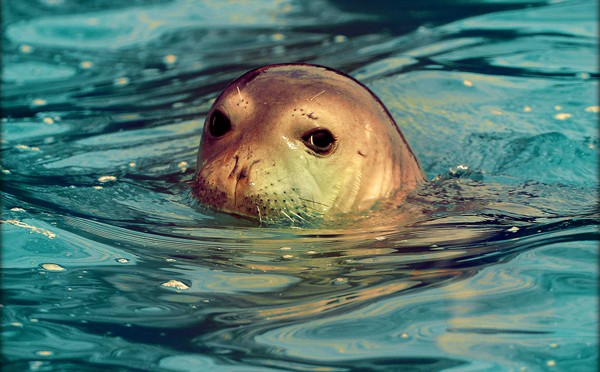Last June 12th it took place in Corralejo the sixth meeting of working on the Action Plan for the recovery of the Monk seal in the Mediterranean and the Eastern Atlantic, where environmental technicians specialised on the monk seal (Monachus monachus) showed case studies that prove that the Eastern Canary Islands (Fuerteventura and Lanzarote) provide the ideal environment for the reintroduction of this species, which disappeared from our coasts in The Middle Ages.
As we told you in our previous article, the islet of Lobos we visit every day in our boat trips from Corralejo, was in ancient times the habitat of this species, because of the peace and quiet and the quality of its water.
The Monk Seal is one of the most primitive species that exist, dating back to 14 thousand years.
This primitivism can be the cause of their great sensitivity towards the human intrusiveness, much more developed than in other phocidae species. And as they always lived in remote and isolated places, free from the threat by terrestrial aquatic predators, they developed a trusting nature, tame and docile, not feeling the need to run away, which is why they have always been at a disadvantage when the threats of the modern world have triggered.
The number of monk seals throughout history has declined due to different reasons:
– The pollution of their habitat: oil spills, black tides…
– The overbuilding in the coast and the access to almost every corner of the coasts, which has turned the man into an intruder of their peaceful corners.
– The sea traffic and its spills, noise, accidents…
– The aggressions they have suffered straight by the men, in many occasions by fishermen who have seen in this species a threat for their catch and they have chosen to get rid of them.
– The development of the fishing gears, which have turned into true traps for the specimens of this species.
The alert on the possible extinction of this species at a global level has set into motion different projects of recovery, such as the one developed by The General Direction of Nature Conservation in the Ministry of Environment and the Regional Environment Vice-Ministry from the Canary Islands, which is trying to reintroduce this species to the Spanish fauna through the Eastern Canary Islands: Fuerteventura and Lanzarote, locations which enjoy unbeatable characteristics for this purpose.
At present, the biggest representation of monk seals in the Mediterranean is found in the colonies in Madeira and Cabo Blanco (boundary between Mauritania and the Western Sahara). The aim of this reintroducing project is that of moving out the specimens of the colony in Cabo Blanco to our coasts, so as to ensure a natural genetic corridor communicating the depleted population from Madeira with that from Cape Verde, thus trying to stop them from being isolated in space, as one of the biggest dangers they are exposed to is that of being concentrated all of them on the same area and any natural disasters (black tide, virus infections, accidents) could exterminate a great deal of them.
This project is still on feasibility study and has recently been approved by the World Conservation Union (IUCN). The Scientific institutions in charge of carrying out these studies are the University of Palmas de Gran Canaria and the University of Barcelona.
The quality of the water, the wealth in marine biodiversity in the Canary Islands and the amount of protected areas in the island turn our waters into an ideal place to achieve the aims of this project.
At present there are other similar projects of recovery of this colony in Hawaii, Madeira, Mauritania, and Morocco, which are getting very good results as confirmed by Pablo Fernández de Larrinoaga, from the CBD-Habitat Foundation.
FuerteCharter’s Team
